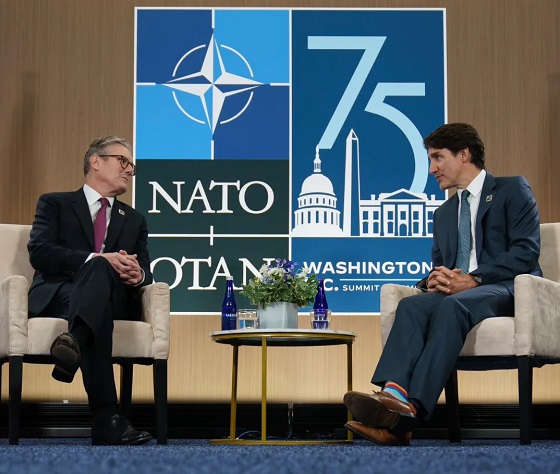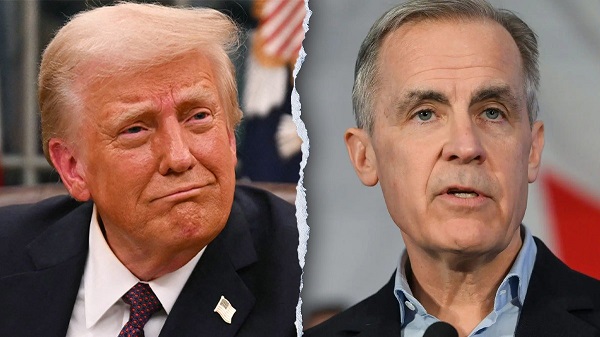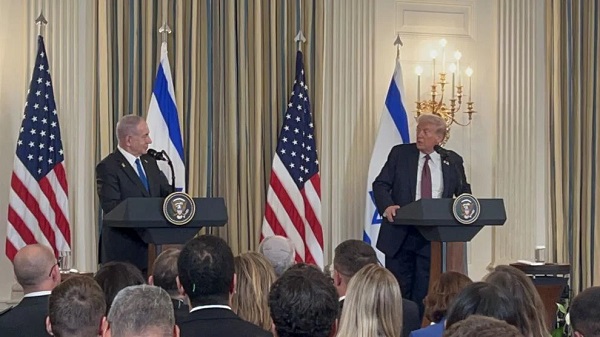Indigenous
Putting government mismanagement of Indigenous affairs in the rear-view mirror
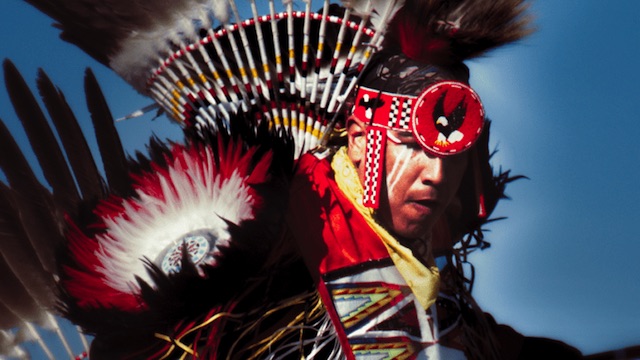
From the Macdonald-Laurier Institute (MLI)
By Ken Coates for Inside Policy
The failures of governance on Indigenous affairs represents an unhappy situation where the problem is, simultaneously, too much government and too little governance
In an era of a mounting number of interconnected complex and difficult problems, one feels sorry for the politicians and civil servants attempting to produce policies, programs, and funding that will make real and sustained progress. We are often confronted with the frightening realization that government, as it is currently structured and directed, is simply not up to the challenges of the 21st century. This is certainly the case with Indigenous affairs in Canada, where the federal government struggles to find the right path forward.
The socio-economic data is clear. Indigenous peoples lag well behind the non-Indigenous population on almost all measures: personal income, access to clean water, educational outcomes, rates of incarceration, health outcomes, opioid deaths, tuberculosis cases, overcrowded homes, and many others. Language loss is endemic, many communities struggle with intergenerational conflict, too many cultural traditions are at risk, and long-term systemic poverty continues to take its toll.
Most Canadians think that the government of Canada is doing a great deal – some people think too much – to address Indigenous challenges and opportunities. They point, as the government often does, to billions of dollars in annual expenditures, formal and public apologies, major court judgments in favour of Indigenous defendants, a seat at a growing number of political tables, and concessions on language, values, and priorities.
The juxtaposition of these two realities is troubling – despite the massive expenditures on Indigenous affairs there are continued and major shortcomings in First Nations, Métis, and Inuit outcomes and achievements. Frustration burns deep in many Indigenous communities, as it does among the general population. Canadians at large have heard the many apologies, hundreds of program announcements, billions in spending, and the near-constant uncertainty of legal processes, and they too are deeply concerned about the failure of decades of concerted government efforts to make things better.
Of course, there have been major achievements. While media coverage focuses on conflict and despair, First Nations, Inuit, and Métis communities have made substantial improvements, even with the current difficulties in mind. Post-secondary attendance remains strong, with continuing challenges with the high school to PSE transition. Indigenous entrepreneurship is a bright spot in the Canadian economy. Modern treaties and self-government agreements are changing how the government manages Indigenous policies, funding, and decision-making. And impact and benefit agreements have secured Indigenous communities an important place in resource and infrastructure development.
But frustrations with the government of Canada’s management of Indigenous affairs continues. Communities complain of long-delayed negotiations, difficulties with payments, the omnipresent influence of the Indian Act, files lingering on the desk of the Minister of Indigenous Services Canada, the inability to get promised money out the door quickly and efficiently, the imposition of complicated accountability provisions, and many other problems. Even major settlements, like the $40 billion allocated to address shortcomings in child and family services, has been bogged down in unrewarding negotiations.
The failures of governance on Indigenous affairs represents an unhappy situation where the problem is, simultaneously, too much government and too little governance. Starting well before Confederation, paternalism became the hallmark of federal policy towards Indigenous peoples. Government officials believed that they knew best and managed Indigenous affairs with scant consideration of Indigenous ideas and goals – and often with a firm, manipulative hand. To the degree that Indigenous peoples escaped the dominance of Ottawa, it was largely due to the shortage of government workers and money, which meant that most northern peoples were left largely alone until the 1950s.
In the 1950s and 1960s, in a massive wave of self-justified paternalism, government intervention expanded rapidly. Indigenous peoples were required to live in government-established and run settlements, typically in government-built houses and under the control of a growing cadre of paternalistic Indian Agents. Residential and day school education became standard fare – as did acute language loss and the disruption of harvesting activity and traditional cultures. Welfare dependency, extremely rare before the mid-1950s, replaced harvesting and the mixed economy as the economic foundations of Indigenous life, with all of the controls and intrusions that attend any reliance on government cheques.
Well-meaning state officials inherited the paternalism of their predecessors, believing that government-designed and -run programs would provide Indigenous communities with pathways to the mainstream economy and the benefits of the dominant society. A few achievements stand out, but generally the effort did not work. Indigenous communities were transformed into frustrated supplicants, relying on a steady stream of applications and approval processes to provide what were typically short-term grants that would fund core community operations.
The arrangements prioritized federal budget-making and administration over Indigenous decision-making and community priority-setting. The budgets grew dramatically. Federal officials made countless announcements. The number of federal civil servants grew dramatically. And individual Indigenous people continued to suffer. Through decades in which state funding and programming continued to expand, the gap between Indigenous well-being and non-Indigenous social and economic conditions scarcely narrowed at all. What did grow dramatically was social dysfunction, self-harm, and family disarray.
It turned out that too much government “help” could be as bad as neglect and inattention to Indigenous needs. Ottawa continued to supply earnest and well-meant programs, but they were built with diminishing enthusiasm from Indigenous peoples. First Nations, Métis, and Inuit communities understood what the government of Canada did not: that community control was much more important and effective than Ottawa-centred policy-making. Much of the Indigenous effort since the 1970s has focused on righting the imbalance, establishing more self-government processes, expanding own-source revenues, and returning to Indigenous peoples the autonomy that had sustained them for centuries.
Indigenous peoples have their own agendas – and they have largely succeeded in changing the core foundations of Indigenous governance in Canada. Modern treaties have, for some people, eliminated some of the more pernicious aspects of the Indian Act and its associated bureaucracies. Self-governing First Nations are become more common and increasingly successful. The Inuit secured their own territory – Nunavut – and acquired considerable autonomy in Labrador and northern Quebec. Impact and benefit agreements and resource revenue sharing have given communities the funding they require to establish their own spending priorities. Duty-to-consult and accommodate provisions have given Indigenous communities a major role in determining the shape and nature of resource development. Major Supreme Court of Canada decisions continue to extend Indigenous authority.
This story of Indigenous re-empowerment has not yet fully unfolded, although the returns to date have been more than promising. Self-governing First Nations in the Canadian North and elsewhere have used their autonomy to very good effect. Communities near the oil sands in Alberta have used their involvement in resource extraction to create substantial autonomy for themselves. Near-urban and urban First Nations are supporting metropolitan redevelopment. Joint ventures and economic cooperation have become the norm rather than the exception. Struggles continue; generations of paternalism and government oversight are not overcome in a flash.
But the primary lesson is simple. State paternalism has been a force for disruption and manipulation of Indigenous communities. Re-empowerment, autonomy, and economic independence have demonstrated the potential to rebuild, enhance, and strengthen First Nations, Métis, and Inuit communities. Decades of government mismanagement of Indigenous affairs must be put in the rear-view mirror. It is time for the re-empowerment of Indigenous communities to become the new normal.
Indigenous realities have changed dramatically, particularly related to Indigenous rights, expectations, capacity, financial settlements and community expectations. Government administration and policy-making, as current constituted, is not sufficiently community-centric, properly funded, appropriately responsive or driven by Indigenous imperatives. Despite generations of large-scale spending and many programs and announcements, basic conditions are far too often seriously substandard and real progress slow and unimpressive. With Indigenous people and their governments in the forefront, Indigenous governance and support requires a dramatic rethinking and Indigenous empowerment in order to respond properly to the challenges and opportunities of the 21st century.
Ken Coates is a Distinguished Fellow and Director of Indigenous Affairs at the Macdonald-Laurier Institute and a Professor of Indigenous Governance at Yukon University
Energy
In the halls of Parliament, Ellis Ross may be the most high-profile advocate of Indigenous-led development in Canada.
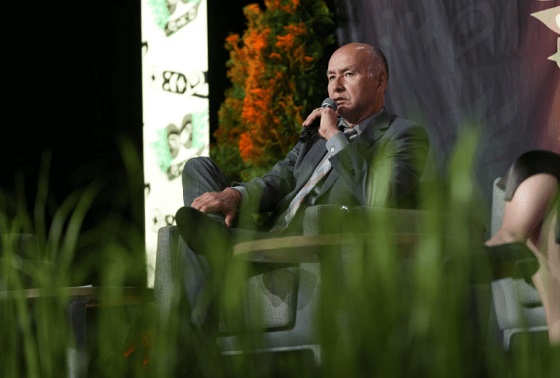
From Resource Works
“We’re not talking about reconciliation anymore…we’re talking about prosperity, and making sure it lasts.”
Ellis Ross stepped onto the stage at the Vancouver Convention Centre last year. He didn’t reach for notes, and spoke plainly to the audience of business leaders, chiefs, and policymakers gathered for the Indigenous Partnerships Success Showcase (IPSS).
“I’m very proud to say that my band, the Haisla Band, is no longer talking about unemployment, poverty, reconciliation,” Ross said. “We’re talking about the management of wealth.”
Ross’s message was equal parts challenge and triumph, and was followed by a standing ovation for a man who has lived the slow climb from the margins to the mainstream. Once a water-taxi operator in Kitamaat Village, he is now one of the country’s most influential Indigenous political figures.
As he returns as a featured guest to this year’s IPSS, Ross embodies the event’s core theme: Shared Prosperity Now.
Born and raised in the Haisla Nation near Kitimat, Ross spent his early life in a community scarred by unemployment and a lack of opportunity.
“We had nothing,” Ross told the Arc Energy Ideas podcast last year. “We were begging for money, begging for infrastructure. We were one of the poorest bands in British Columbia.” Under his leadership, that changed forever.

As Haisla chief councillor from 2011 to 2017, Ross helped transform his community through industry partnerships rooted in resource development. He rejecting the old idea that development was a natural enemy of culture, and steered the Haisla into the energy economy on their own terms by embracing liquefied natural gas (LNG).
The Cedar LNG project, co-owned by the Haisla Nation and Pembina Pipeline, will become the largest Indigenous-majority-owned energy project in Canada’s history.
“It will have one of the lowest carbon footprints in the world,” said Crystal Smith, Ross’ successor as Haisla Chief Councillor. Cedar LNG is scheduled to begin operation in 2028.
For Ross, participation means power.
“If you uplift an Aboriginal community, the biggest beneficiaries, apart from First Nations, are the rest of British Columbia,” he said at IPSS in 2023. “We’ve got no malls or car dealerships on reserves. We spend it in our neighbouring communities.”
Ross’s journey hasn’t been without conflict. Writing in the Times Colonist in 2020, he warned of foreign-funded activists “hijacking our future” by dividing Indigenous communities and undermining resource partnerships.
“The last thing any of us need is intervention from foreign groups that want to hijack our future for their own objectives,” he wrote, condemning the influence of U.S. foundations funnelling money to anti-development campaigns.
He is vehemently opposed to “distraction politics”, and it became a hallmark of Ross’s political career. As MLA for Skeena from 2017 to 2024, Ross built a reputation for straight talk. He was eager to defend both workers and environmental standards for the modern resource industry.

With a pragmatic style, he gained admiration from both business leaders and former premier Christy Clark, who has praised Ross because he “fought for an LNG industry that will be the cleanest, the greenest, and the safest anywhere in the world.”
By early 2024, Ross announced his move to federal politics, saying he wanted to take “the principles I’ve developed over the last 15 years” to Ottawa.
Now the Member of Parliament for Skeena-Bulkley Valley, he’s now one of the most prominent Indigenous voices in the House of Commons, and one of the few with deep experience in both community governance and heavy industry.
Recently, Ross said he plans to hold the federal government to its promise of making Canada an “energy superpower.”
“For the area and for Canada, I want to hold this government accountable for those words,” he told the Prince George Citizen. “Projects like LNG Canada and Cedar LNG can show the world how Indigenous leadership and environmental responsibility go hand in hand.”
Ross’s attendance at IPSS 2025 comes at a moment when Indigenous participation in major projects is reshaping the national economy.
More than two dozen First Nations now hold equity in energy, mining, or infrastructure developments. It is proof that reconciliation, in his view, must be measured not in lofty statements but in actual ownership.
“You’ve got to leave a lot of those old narratives at the door,” he told delegates. “We’re not victims. We’re builders.”
Now, from the carpet of Parliament Hill to the polished floors of the Vancouver Convention Centre, Ellis Ross continues to speak for both the Haisla and the wider coalition of Indigenous and non-Indigenous Canadians who believe in growth through partnership.
As IPSS Event Lead Margareta Dovgal put it, “He bridges worlds—the boardroom, the band office, and the floor of the legislature.”
When Ross steps back onto the IPSS stage this November, expect the same mix of candour and conviction that has defined his career. “
We’re not talking about reconciliation anymore…we’re talking about prosperity, and making sure it lasts.”
Indigenous
Bloodvein First Nation blockade puts public land rights at risk
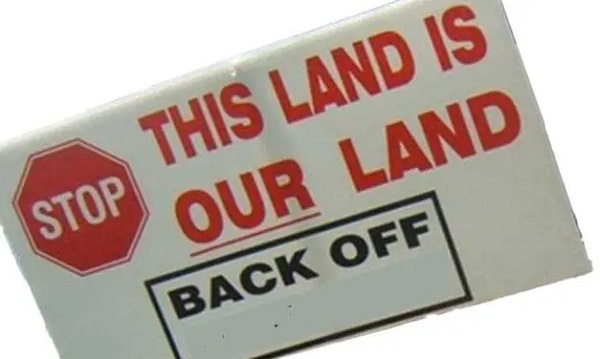
This article supplied by Troy Media.
The Bloodvein blockade of Crown land is illegal. Canadians must insist on the rule of law, or watch public land quietly slip away
The Bloodvein First Nation in northeastern Manitoba has erected a blockade on Crown land, barring non Indigenous hunters from accessing a large area surrounding its reserve. While the move may reflect frustration with provincial policies or rising tensions over land use, there’s one inescapable fact: it is illegal.
Yet you wouldn’t know that from media coverage.
CBC, for instance, referred to the affected area as “its land,” quoting First Nations leaders and provincial politicians who appear to believe that land surrounding a reserve belongs to the First Nation itself. It does not. The land in question is Crown land—public land owned and managed by governments on behalf of all Canadians, not by any individual or group.
Bloodvein is governed under Treaty 5, which, like other numbered treaties, involved the full cession of land to the Crown. The numbered treaties, signed between 1871 and 1921, were formal agreements between Indigenous nations and the federal government. In exchange for surrendering large territories, First Nations received reserved land, annual payments and the right to hunt and fish on unoccupied Crown land, among other benefits.
The language in Treaty 5 is clear: Indigenous signatories “cede, release, surrender and yield up” all rights and title to the land in question. While the treaty permits hunting and fishing on Crown land, those rights are subject to regulation and can be overridden when land is needed for settlement, resource development
or other public uses.
This framework was reinforced in 1930 through the Natural Resources Transfer Agreements, which granted provinces full control over Crown lands and resource management, while protecting treaty-based hunting and fishing rights.
This means Bloodvein residents, like all Indigenous peoples in Manitoba, retain the right to hunt and fish on Crown land, but they do not have the right to prevent others from doing the same.
The Manitoba Wildlife Federation has called the blockade unlawful and urged the government to act. So far, Manitoba Premier Wab Kinew has remained silent. That silence sends the wrong message, not just about this specific dispute, but about the rule of law more broadly.
While public sympathy for reconciliation is real, so too is concern that Indigenous land claims are increasingly encroaching on public and private property rights.
Cases like the Cowichan Tribes’ recent title claim, supported by oral history and largely untested assertions of continuous occupation, are raising alarm bells for
property owners, especially in British Columbia, where court decisions have cast doubt on long-held ownership rights.
At the heart of these cases is “Aboriginal title”: a legal concept created by Canadian courts that recognizes ongoing Indigenous land rights based on historic occupation, even in the absence of a treaty. These claims, if successful, can override existing property titles and affect both public and private lands.
That concern is compounded by public messaging. Terms like “unceded territory,” “stolen land” and “traditional lands” are now used uncritically in media and government communications. That messaging includes the widespread use of land acknowledgements, statements recognizing that land is historically Indigenous territory. While often intended as gestures of respect, these acknowledgements are also used by some activists to reinforce legal and political claims to land.
Canadians have sat through countless land acknowledgements without being told that these rituals are often linked to broader strategies aimed at asserting expanded territorial control. Many are now asking: How far will this go?
If we are to preserve a fair and functioning system of property rights, the public must insist that governments enforce existing laws, even when it’s politically difficult. Crown land belongs to all Canadians. Indigenous groups have rights, important ones protected by treaty and by law, but so do other Canadians. Those rights must not be overridden by unilateral action or political inertia.
Premier Kinew and other provincial leaders need to reaffirm that the rule of law applies to everyone. That means making it clear: the Bloodvein blockade has no
legal standing and should be removed. Canadians—Indigenous and non Indigenous alike—have equal rights to access public land under the law. Respect for treaty rights requires clarity and honesty about what those treaties say. They must not be reinterpreted after the fact through the lens of modern politics or public pressure.
Crown land is not a bargaining chip. It’s a trust held for all Canadians. If politicians won’t defend it, then Canadians must—because public land isn’t something we give away to silence criticism. It’s something we defend, together.
Brian Giesbrecht is a retired judge and a senior fellow at the Frontier Centre for Public Policy.
Troy Media empowers Canadian community news outlets by providing independent, insightful analysis and commentary. Our mission is to support local media in helping Canadians stay informed and engaged by delivering reliable content that strengthens community connections and deepens understanding across the country.
-

 Business2 days ago
Business2 days agoThe Grocery Greed Myth
-
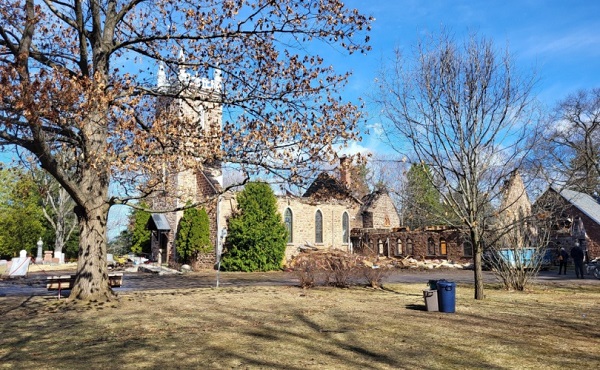
 Crime2 days ago
Crime2 days agoCanada’s safety minister says he has not met with any members of damaged or destroyed churches
-
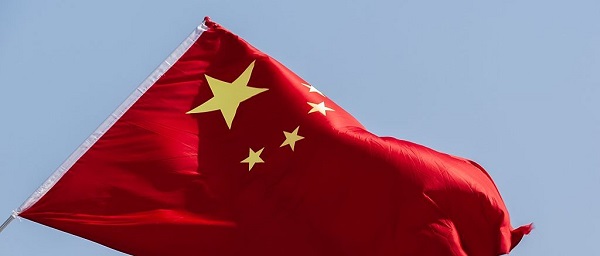
 Business2 days ago
Business2 days agoTrump Warns Beijing Of ‘Countermeasures’ As China Tightens Grip On Critical Resources
-

 Frontier Centre for Public Policy12 hours ago
Frontier Centre for Public Policy12 hours agoCanada’s Democracy Is Running On Fumes
-
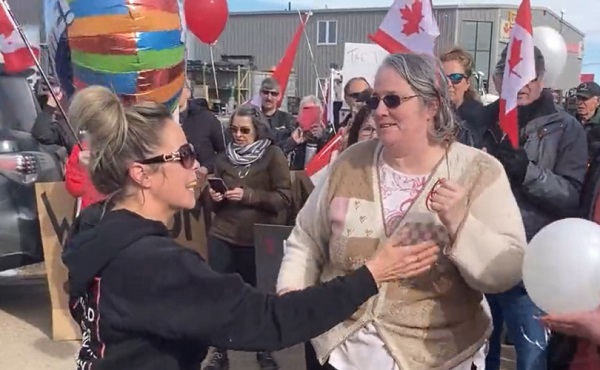
 COVID-192 days ago
COVID-192 days agoTamara Lich says she has no ‘remorse,’ no reason to apologize for leading Freedom Convoy
-
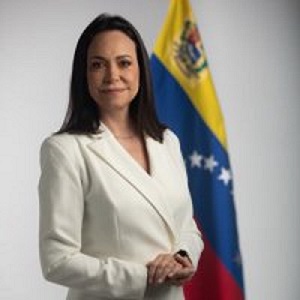
 International2 days ago
International2 days agoTrump gets an honourable mention: Nobel winner dedicates peace prize to Trump
-
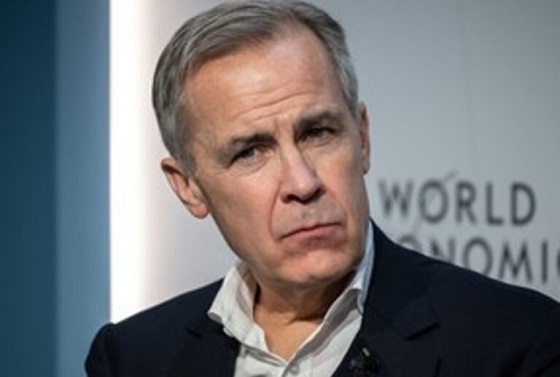
 Business2 days ago
Business2 days agoCarney government plans to muddy the fiscal waters in upcoming budget
-

 Business2 days ago
Business2 days agoTax filing announcement shows consultation was a sham


